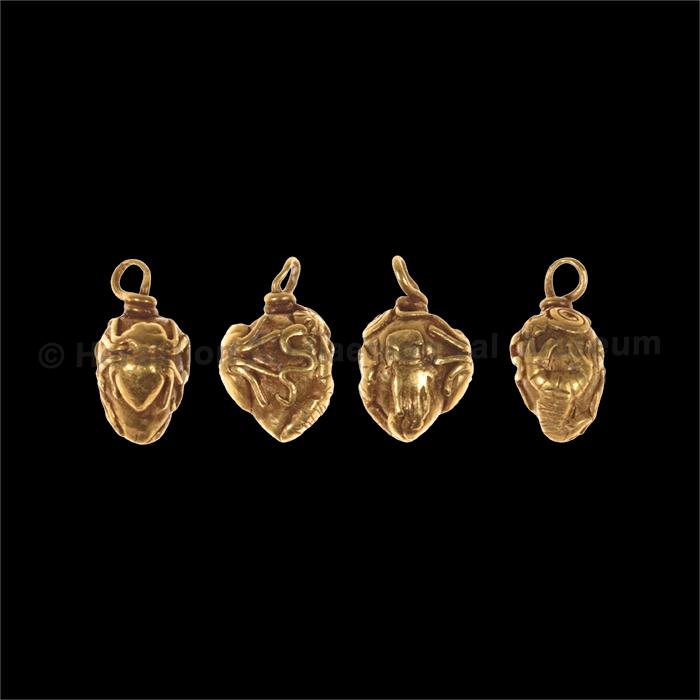Pendant amulet with relief apotropaic symbols
Χ-Α141
Metal (Gold)
Intact
Height 1 cm. Width: 0.5 cm.
Hagia Triada
Tomba degli Ori
Late Bronze Age. Final Palatial period, Late Minoan IIΙΑ period:
1400-1300 BC:
Gallery:
XCase:
111Exhibition thematic unit:
Late Bronze Age - Neopalatial period (1700-1450 BC) - Final Palatial period (1450-1300 BC).The cemeteriesCemeteries of Katsambas and the Phaistos area. Cemeteries in the periphery of the palaces
Description
Gold pendant with appliqué human hand, snake, scorpion, spider, spiral and starfish. The pendant with apotropaic symbols was probably an amulet worn to protect its owner from arachnid and reptile bites and stings. The apotropaic symbols depicted on it had various meanings in the civilisations of the East Mediterranean. In Egypt and Mesopotamia the scorpion was a symbol of fertility, abundance and good fortune. It would have had similar connotations in Minoan Crete, as evidenced by its numerous representations on seals and other objects.Bibliography:
Ν. Dimopoulou-Rethemiotaki, Το Αρχαιολογικό Μουσείο Ηρακλείου,J. S. Latsis Foundation, 2005, 309-310. J. A. Sakellarakis, Μουσείο Ηρακλείου, Ekdotiki Athinon, 1982, 71. Karetsou A., Andreadaki-Vlazaki M., Papadakis N. (ed.). Κρήτη - Αίγυπτος, Πολιτισμικοί Δεσμοί τριών χιλιετιών. Κατάλογος, Heraklion 2000, cat. no. 177, p. 187-188.Author:
K. T.Photographs' metadata
